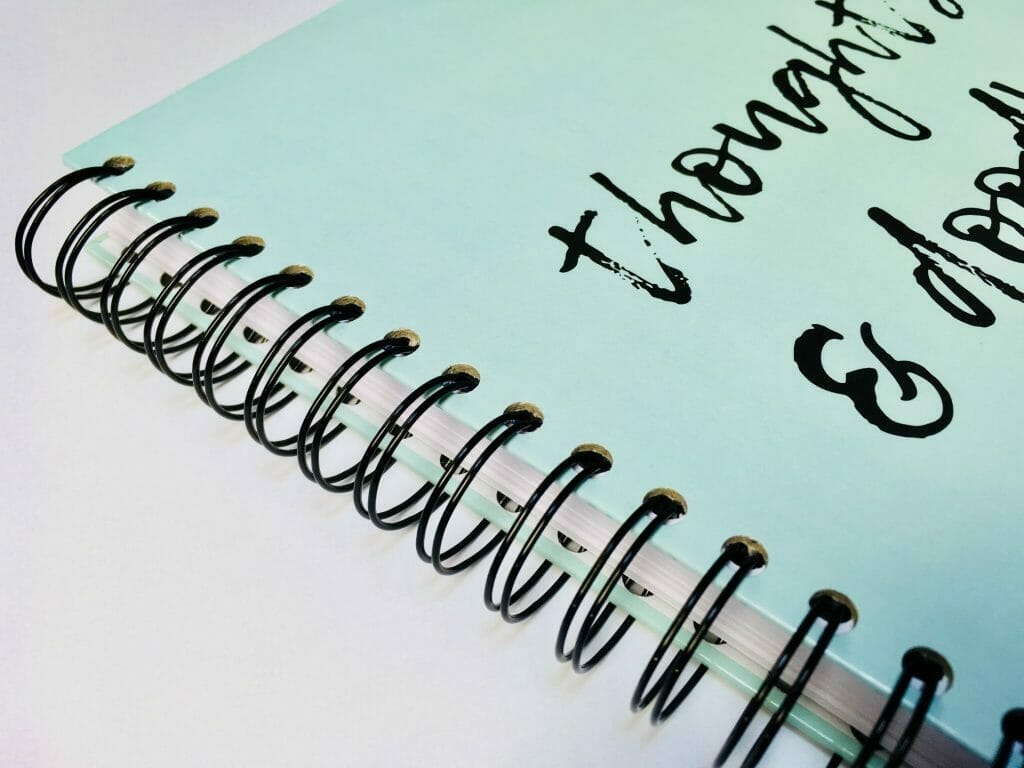If you are a student putting the finishing touches to a dissertation, you will want to make sure all your hard work is well presented in a document you can be proud of. Similarly, if you are preparing a brochure for a public or work event, making the right impression is important. Here’s a guide to the different methods of document binding.

Saddle stitch binding
Saddle-stitched booklets, also referred to as stapled booklets, and are suitable for publications such as brochures, catalogues, and zines of up to 84 pages. The pages are comprised of overlaid sheets, called ‘spreads’, which folded down a central crease and stapled together to form a spine.
Typically, the cover of a saddle-stitched document is weightier than the interior paper, or has a gloss finish, or other difference of texture. This doesn’t have to be the case, but it can lend distinction and quality to the finished document. It is a fast, economical, and durable method of binding a document which is very popular.
You may be wondering what the term ‘saddle-stitching’ refers to, when wire staples are used. This is because ‘stitching’ is an industry term that was carried over from the days when all books were thread sewn.‘Saddle’ refers to the apparatus the sheets are laid over during the binding process.
Loop stitch binding
This is a similar binding method to saddle-stitching, except that the staples have loops which protrude from the spine, allowing the document to be filed in a ring binder. It is perfect for training manuals, reports, study materials, and other documents which may be produced in multiple series.
Wire binding
This method may also be known as wiro, spiral, and coil binding, and is one of the most popular ways of binding a document. It’s cost-effective, secure, and the pages turn easily to 360 degrees, and lay flat, so there is no danger of words or images being lost in the gutter along the central inner crease of the document.
The pages are punched along the binding edge and bound together with a C shaped metal wire. The diameter of the wire will depend on the page count, and the thickness of the paper used. This method can be used with a range of paper sizes, from A6 to A3 and more, and is commonly used for reports, manuals, portfolios, and presentations.
A great advantage of wire binding is that it can accommodate hardback covers, which can open completely flat. This makes it a perfect choice for notebooks, diaries, sketch books, planners, and other materials which are portable and need to be carried around in bags and briefcases, and referred to and written in on the go.
Comb binding
This is a very similar method to wire binding, except that the pages are bound together by a plastic comb strip, which is available in a variety of colours. It’s a very economical choice, and also makes it easier to add extra pages later on.
Click here to order brochure printing
Looking for a reliable printing company?
Get an instant quote